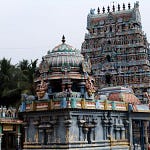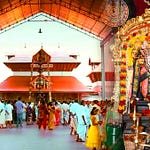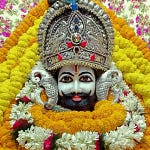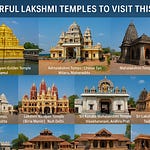India is home to several ancient Sun temples that have stood as architectural marvels and centers of spiritual significance. Among them, the Martand Sun Temple, located in Anantnag, Jammu and Kashmir, stands as one of the most historically and culturally significant temples. Despite its ruined state, the temple remains an architectural wonder and a testament to Kashmir’s rich Hindu heritage.
1. The Origins of the Martand Sun Temple
The Martand Sun Temple was built during the 8th century CE by King Lalitaditya Muktapida of the Karkota dynasty. Martand, which means “Sun” in Sanskrit, signifies that the temple was dedicated to the Hindu Sun God, Surya.
Who Was Lalitaditya Muktapida?
Lalitaditya was a powerful ruler of the Karkota dynasty, known for his military conquests and patronage of art and architecture.
His reign (724–761 CE) is considered a golden age for Kashmir, during which he built numerous temples and expanded the kingdom beyond its borders.
2. Architectural Brilliance: A Blend of Styles
The Martand Sun Temple is one of the finest examples of Kashmiri temple architecture, showcasing a unique blend of Gandhara, Gupta, and Kashmiri styles.
Key Architectural Features
Grand Central Shrine:
The temple was built on a rectangular courtyard measuring 220 feet by 142 feet.
It had 84 small shrines surrounding the main sanctum, symbolizing the 84 forms of the Sun God.
Intricate Carvings:
The walls of the temple featured detailed carvings of Hindu gods and celestial beings.
Images of Vishnu, Shiva, and Ganga-Yamuna were present alongside depictions of Surya.
Majestic Entrance:
The entrance was flanked by two massive stone pillars, giving it an imposing look.
The pillared hall (mandapa) was an essential feature where devotees gathered for prayers.
Panoramic Location:
The temple is built on a plateau, offering a breathtaking view of the Kashmir Valley.
Its strategic placement ensured it was visible from great distances, symbolizing the Sun God’s supremacy.
3. The Fall of the Temple: A Tale of Destruction
Despite its grandeur, the Martand Sun Temple met a tragic fate. The temple was demolished in the early 15th century by Sultan Sikandar Butshikan, a ruler of the Shah Mir dynasty known for his destruction of Hindu temples.
Reasons for Destruction
Sultan Sikandar was known for his Islamization policies, which included the destruction of temples.
The temple, being an icon of Hindu heritage in Kashmir, was targeted.
Its demolition took over a year, as the massive stone structures were difficult to break down.
Even in ruins, the temple continues to stand as a symbol of Kashmir’s lost Hindu past.
4. Spiritual and Historical Significance
The Martand Sun Temple was not just a place of worship but also a center for astronomical studies and spiritual enlightenment.
Importance in Hinduism
The Sun God (Surya) is one of the principal deities in Hinduism, worshiped for health, energy, and prosperity.
The temple likely hosted elaborate rituals and Surya Namaskar (sun salutations).
The winter and summer solstices were possibly observed here, aligning with the temple’s astronomical orientation.
Martand in Ancient Texts
The temple finds mention in Kalhana’s Rajatarangini, a 12th-century historical chronicle of Kashmir.
Historians believe it was one of the most magnificent temples in India during its prime.
5. Martand Sun Temple vs. Other Sun Temples in India
How Does It Compare to Other Sun Temples?
TempleLocationBuilt ByUnique FeatureMartand Sun TempleKashmirLalitaditya Muktapida84 surrounding shrines, high plateau locationKonark Sun TempleOdishaKing Narasimhadeva I (13th century)UNESCO Heritage Site, Chariot designModhera Sun TempleGujaratKing Bhima I (11th century)Stepwell-style tank for ritualsKatarmal Sun TempleUttarakhandKing Katarmalla (9th century)Himalayan backdrop, intricate carvings
While Konark’s Sun Temple is the most famous, Martand is considered one of the earliest and grandest.
6. Present-Day Condition and Tourism
Despite its destruction, the Martand Sun Temple remains a major tourist attraction and an ASI (Archaeological Survey of India) protected site.
Why Visit Martand Sun Temple?
Historical Significance – One of India’s oldest Surya temples.
Scenic Beauty – Offers panoramic views of Kashmir Valley.
Architectural Ruins – A glimpse into ancient Kashmiri craftsmanship.
How to Reach?
By Air: Nearest airport – Srinagar (60 km).
By Rail: Nearest railway station – Jammu (250 km).
By Road: Well connected via Anantnag town.
7. Cultural Revival and Calls for Restoration
Many historians and Hindu organizations have called for the restoration and recognition of the Martand Sun Temple.
The temple is also seen as an important symbol of Kashmiri Pandit heritage.
It has been featured in movies, including the Bollywood film Haider (2014).
Government Efforts
The Indian government has increased conservation efforts, but full-scale restoration remains a challenge.
A Forgotten Wonder of India
The Martand Sun Temple is more than just a set of ruins – it is a monument to Kashmir’s glorious past. Once an engineering and spiritual marvel, it still stands as a symbol of resilience despite centuries of neglect and destruction.
While many of India’s grand temples have continued to thrive, Martand reminds us of what has been lost, making it all the more important to preserve, protect, and remember this ancient jewel of Kashmir.










